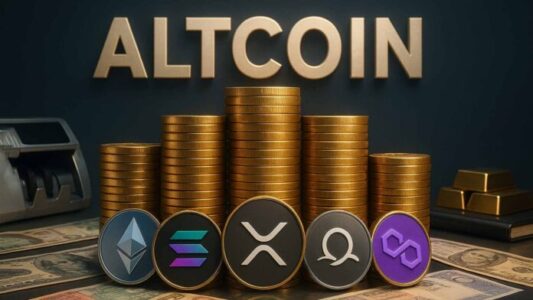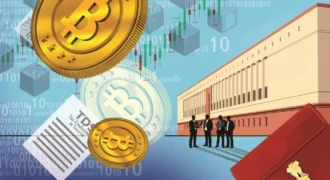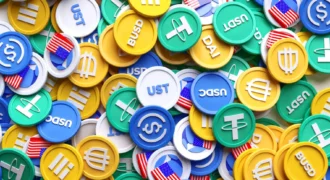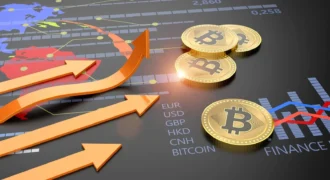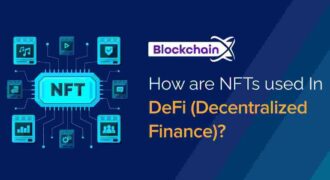Cryptocurrency markets are known for their wild price swings, but nowhere is this more evident than in the altcoin space. While Bitcoin often sets the overall market tone, altcoins — from Ethereum and Solana to niche DeFi and NFT tokens — are far more volatile, presenting both opportunities and risks for traders and investors. Understanding what drives these sudden movements is essential for anyone seeking to navigate the unpredictable terrain of altcoins.
In 2025, altcoin volatility is shaped by a combination of market sentiment, liquidity dynamics, technological developments, and external economic factors. Let’s unpack the drivers behind these rapid swings and explore how investors can respond strategically.
What Makes Altcoins More Volatile Than Bitcoin?
Altcoins generally experience higher volatility than Bitcoin due to several key characteristics:
- Lower Market Capitalization
Many altcoins have smaller market caps compared to BTC. This means that even modest capital inflows or outflows can disproportionately impact prices. A single whale transaction can move the market significantly. - Limited Liquidity
Smaller trading volumes on certain exchanges lead to thin order books, making prices more sensitive to large buy or sell orders. Low liquidity amplifies volatility and increases slippage for investors. - Speculative Nature
Many altcoins are driven by hype, innovation, or community enthusiasm rather than widespread adoption. This speculative interest can create rapid price surges, often followed by equally sudden corrections. - Concentration of Holders
In some altcoins, a small group of investors or developers may hold a large percentage of tokens. Decisions by these holders can trigger sharp market movements. - Interconnectedness with Bitcoin
Altcoins frequently follow Bitcoin’s price trends. When BTC experiences sharp gains or losses, altcoins often exhibit magnified reactions, creating exaggerated swings in the market.
Key Drivers of Sudden Price Swings in Altcoins
Several factors contribute to the dramatic movements observed in altcoin prices:
1. Market Sentiment and FOMO
Investor psychology plays a critical role in altcoin volatility. Sudden optimism, hype around new projects, or celebrity endorsements can trigger fear of missing out (FOMO), causing rapid buying. Conversely, negative news, regulatory announcements, or market corrections can induce panic selling.
- Example: A viral announcement about a DeFi platform integrating AI features can send token prices skyrocketing in hours.
- Conversely, rumors about exchange delistings can spark sharp declines.
2. News and Fundamental Developments
Altcoins respond quickly to project updates, partnerships, and technological milestones. Network upgrades, smart contract launches, or NFT drops can drive sharp upward movements, while delays, security breaches, or governance disputes often lead to steep declines.
- Example: Ethereum Layer-2 adoption news can boost Ethereum-linked altcoins, while a major smart contract hack can trigger market-wide sell-offs.
3. Liquidity and Exchange Dynamics
Liquidity plays a decisive role in price stability. Altcoins with thin order books or concentrated exchange listings are more susceptible to sudden price swings. Large buy or sell orders can create rapid spikes or dips, magnifying volatility.
- Decentralized exchanges (DEXs) often exhibit more pronounced swings for smaller altcoins due to variable liquidity pools, while centralized exchanges (CEXs) provide deeper markets and somewhat smoother movements.
4. Whales and Large Holders
Whales — investors holding significant quantities of a token — have the power to influence price trends. Strategic buying or selling can create artificial price movements, sometimes triggering panic among smaller investors.
- Whales may also coordinate movements in less-regulated markets, increasing short-term volatility.
5. Algorithmic and Automated Trading
Automated trading bots, particularly on high-frequency trading platforms, can exacerbate volatility. Bots react to price signals instantly, often amplifying momentum in both upward and downward directions. In altcoins with low liquidity, bot activity can cause sharp swings in seconds.
6. Macroeconomic and Regulatory Events
Broader economic trends and government policies can impact altcoin markets dramatically:
- Interest rate announcements, inflation data, or global economic uncertainty often trigger risk-off behavior, affecting speculative altcoins.
- Regulatory clarity — or lack thereof — can cause sudden corrections as investors adjust positions based on potential legal risks.
7. Correlation with Bitcoin and Ethereum
Altcoins often move in tandem with Bitcoin and Ethereum, but with higher amplitude. When BTC surges or dips, altcoins frequently respond more dramatically due to leverage trading, speculative sentiment, and market psychology.
- Example: During BTC’s sharp correction, smaller altcoins may lose 20–50% of their value within hours, even if the fundamentals remain strong.
Strategies to Navigate Altcoin Volatility
While volatility presents risks, it also creates opportunities for informed investors. Here are some strategies:
- Diversification
Spread investments across multiple altcoins to mitigate the impact of a sudden drop in any single token. Include high-cap, established altcoins alongside promising smaller projects. - Risk Management
Use stop-loss orders, position sizing, and secure wallets to minimize potential losses. Avoid investing more than you can afford to lose in highly volatile tokens. - Monitor News and Social Sentiment
Stay informed about project updates, partnerships, and community activity. Social media platforms, Telegram groups, and Twitter feeds can offer early indicators of hype or emerging risks. - Liquidity Awareness
Prioritize altcoins with higher liquidity on reputable exchanges. This reduces the risk of slippage and enables smoother trade execution. - Long-Term Perspective
For fundamentally strong altcoins, short-term volatility can be ignored in favor of long-term growth potential. Avoid reacting impulsively to minor price swings. - Technical Analysis
Use chart patterns, moving averages, and volume indicators to identify entry and exit points, particularly in high-volatility environments.
Case Studies: Volatility in Action
- Solana (SOL) Flash Surge
During a major DeFi partnership announcement, SOL experienced a 25% price increase in a single day, fueled by FOMO and social media hype. Low liquidity in smaller markets magnified the move. - NFT-Linked Tokens
Tokens associated with NFT drops, like SAND or AXS, often see rapid price spikes followed by steep corrections once initial enthusiasm wanes. - Security Breaches and Hacks
Altcoins associated with compromised smart contracts or DeFi exploits can lose 30–50% of value within hours, underscoring the impact of project fundamentals on volatility.
The Opportunity in Volatility
While sudden swings can be intimidating, volatility also creates opportunities for investors who understand the market:
- Short-term traders can capitalize on momentum for quick profits.
- Long-term holders can accumulate undervalued tokens during sharp dips.
- Strategic investors can combine fundamental analysis with sentiment tracking to identify undervalued altcoins poised for recovery.
The key is balancing risk and reward, and avoiding impulsive decisions driven solely by fear or greed.
Conclusion
Altcoin volatility is both a challenge and a feature of the cryptocurrency ecosystem. Driven by market sentiment, liquidity dynamics, whales, technological developments, and macroeconomic factors, sudden price swings are a defining characteristic of the altcoin market.
For investors, understanding these drivers is crucial for navigating risk, seizing opportunities, and making informed decisions. By combining research, technical analysis, and strategic portfolio management, investors can harness volatility rather than be victimized by it.
In 2025, the altcoin space remains one of the most dynamic and high-potential areas in cryptocurrency. Those who understand the forces behind price swings and act with discipline and insight are best positioned to thrive in this ever-changing digital frontier.

